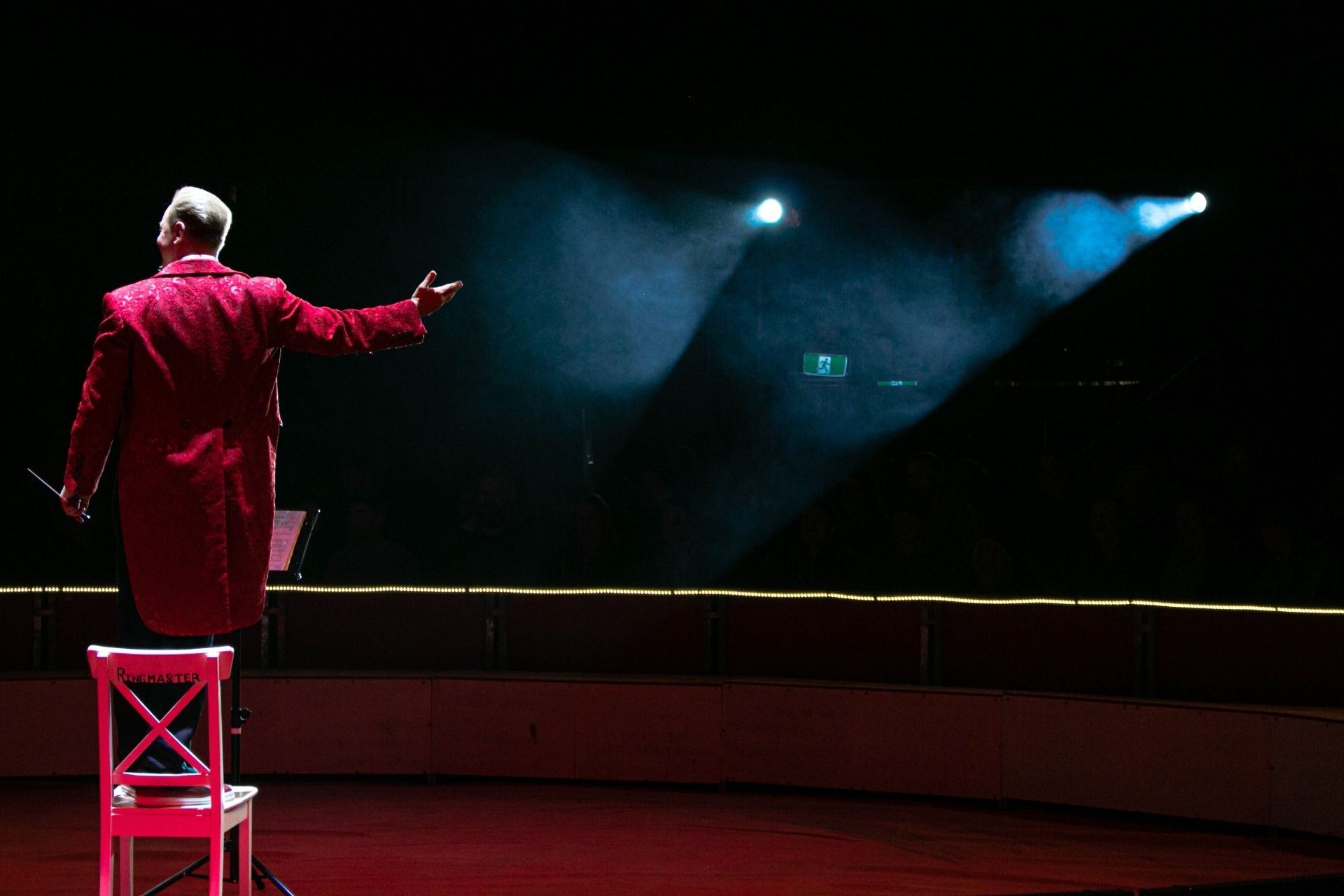Photo by Mark Williams on Unsplash
By Dorothy Henning, GCFP, Havening Techniques® Practitioner
As the lights dim darkening the circus tent, our chatter descends into a hush.
The spotlights bolt on, illuminating the center ring where our eyes dash, riveted to the image of a plumber crouched under a sink.
We watch in awe as the ribs on the right side of his chest move like an accordion to usher his right arm under the pipe. “Ahhhh” the crowd expels as his left arm reaches up and over the pipe, grasping it. “Ooooh” resonates throughout the tent as his left chest fans open to facilitate the reach, inviting his breath to enter the expanded left ribs.
His head is cocked to the right, his pelvis veering slightly to the left, and he leans more weight onto his stable right foot. The plumber is creating a spiral zigzag of living balance around a central vertical plumb line. The invisible line travels through his center-of-gravity down to his base of support.
Breathing softly, he places the wrench on the pipe and begins to tighten it.
Instantly our appreciative applause bursts throughout the tent with a roar. In this moment, the plumber has discovered his solution in balanced movement to carry out his intention.
But wait, now it appears the pipe isn’t cooperating. He needs to reach slightly more to the right. He must alter his strategy and his intention changes. His inflated left chest is now in the way. The solution in one moment has become part of the barrier in the next.
He teeters in balance as he shifts. Playfully smiling, he folds his left ribs and expands the ribs in his right chest. Stabilizing his new configuration he succeeds in tightening the pipe. So it continues, one moment to the next, adapting, adjusting, teetering away from a current balance and moving toward a new one.
Like the plumber, each of us is a living, breathing manifestation of our intention. Whether we are reaching for the glass on the shelf, getting in the car, or taking a step. Most often we act out our intentions without circus tent fanfare, except of course to bask in the pleasure of our own satisfaction. Yet we are marvelous each day as we continuously adapt to changes in our situations, moving toward a new balance in each moment to carry out our intention.
We balance our intention.
This all may seem like a lot of work. Fortunately for us much of this adjusting is done in the background. Some of it in our deep somatic brain. Our somatic brain is the part of ourselves that senses and responds to bodily orchestrate our wishes and movements. A dance of continual adaptation within a myriad of constantly changing conditions.
Our job is to facilitate this process. By creating safety we unleash our capacity to sense. We hone our awareness and offer ourselves experiences to try things out. Our brain and nervous system work together by using this information to respond in our own best interest. Each of us is a full orchestra of tuned instruments playing harmoniously as one to balance our intention.
Balance is a leap of faith.
Back to the plumber. What is going on when he allows his weight in gravity to drop down through his body in balance?
One system at work is a series of muscles with a dynamic feature. These special muscles are in the back, mostly close to the spine. Without listing the full anatomy here, these muscles are also in the legs, buttocks, in the feet and at the base of the skull. They are involuntary, you can’t control them. Instead they respond to sensing gravity. Their technical term is antigravity muscles.
These antigravity muscles extend from our feet, through our legs, and through the entire body including our internal organs to create an entire system. But I have a nickname for them, gravity response muscles. When these muscles, in dynamic synergy with your nervous system, sense this gentle pulling downward they respond like a spring softly rebounding upwards. When the plumber allows the gravity to sift through him, there is a gentle lifting to help support his weight in balance. This is a magnificent life process! It’s nearly a leap of faith for him and for all of us to believe this gravity response system works throughout ourselves.
We can think of our gravity response muscles like a good friend who’s there for us. Yet if we don’t believe they will be there, we don’t give them the chance to come forward. We may habitually contract and hold onto tension, not allowing ourselves to release down into gravity. We may override too much of the gravity response process. Then this system doesn’t have a chance to be adequately activated and do its job well.
Of course, if we don’t sense the gravity response process being activated then we don’t believe it’s there, and so a vicious cycle ensues. However, if we permit ourselves to explore without judgment, almost as children do at play, then while sensing not forcing we allow this process to surface again and again.
All the processes of our amazing human balance system are there to work for us if we agree to, simply, just show up.
1) Observe yourself with kindness.
2) Offer yourself safety to experience.
3) Listen and respond to signals of what you are sensing inside and out.
Your orchestra is always playing for you.
It may sometimes play a gentle lullaby, sometimes a grand overture, but your balance system is always playing the best that it is able. The plumber and all of us can organize around our own central plumb lines. Go ahead, feel and listen, allow the experience of gravity. Permit your orchestra to help you play and sense your balance, so you may carry out and live your intention.
Try this short lesson to help you discover movement and space in each side of your rib cage, gentle crescent side-bending.
Dorothy Henning is passionate about helping students discover their resources to live a better life. Based in Louisville, Ky, she is planting possibility and nurturing hope through her worldwide online membership. mymove.integrativemovement.us


